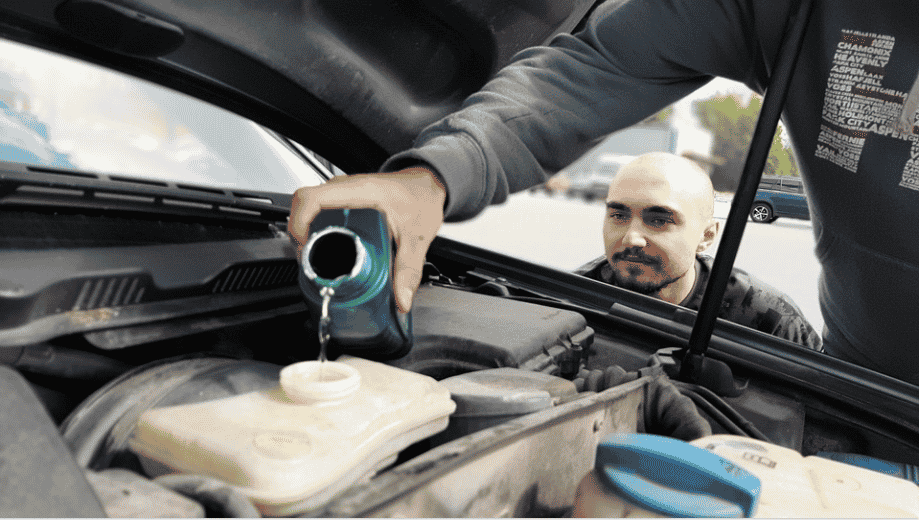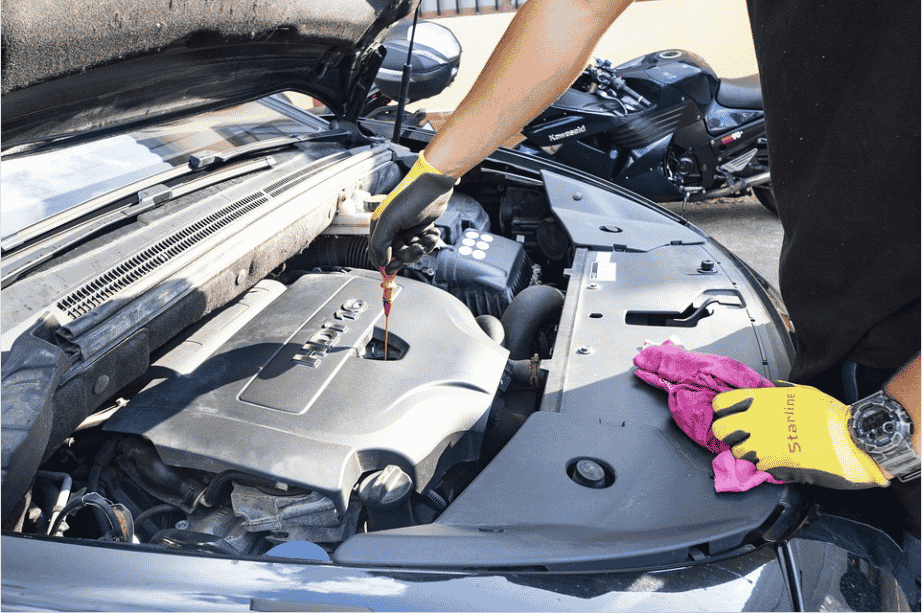
How to Put Coolant in a Car: A Step-by-Step Guide
When your car’s engine starts to overheat, it’s important to know how to put coolant in the car as soon as possible.
Not only is this necessary for the safety of your vehicle, but it can also prevent more serious damage from taking place.
In this step-by-step guide, we will show you how to add coolant to your car quickly and easily.
So don’t wait – follow these instructions on how to put coolant in car smoothly.
What is antifreeze
Antifreeze coolant is a liquid used in car radiators to help keep the engine cool.
The coolant is made up of water and ethylene glycol, and it works by absorbing heat from the engine and dissipating it into the air.
In addition to keeping the engine from overheating, antifreeze coolant also helps to prevent rust and corrosion.
It’s important to regularly check the level of coolant in your car’s radiator and to add more if necessary.
If the level gets too low, the engine could overheat and sustain damage.
Importance Of Adding Coolant To Your Car
Adding coolant to your car is important for some reasons.
First, it helps to keep the engine cool and prevents overheating.
Second, it helps to prevent rust and corrosion.
Third, it helps to keep the car running smoothly by lubricating the engine parts.
Fourth, it helps to protect the car’s paint job by preventing fading.
The coolant can improve fuel efficiency.
Sixth, it can extend the life of your car’s engine.
Finally, adding coolant to your car is simply good preventive maintenance that will help you avoid costly repairs down the road.
By regularly checking the level of coolant in your car and adding more when necessary, you can keep your car running smoothly for years to come!
Its function is to keep the engine from freezing up by circulating coolant through the radiator.
50% contraction in volume happens when water freezes which can cause damage to the engine block and other metal parts.
Antifreeze lowers the freezing point of water so that it can circulate without freezing and ruining your engine.
It also has a high boiling point so that it can dissipate heat better than water alone.

Steps On How to add Coolant In A Car
Adding antifreeze to your car is a simple process that anyone can do.
Just follow these steps:
- Locate the radiator cap on your car. This is usually located on the front of the engine, near the top.
- Remove the radiator cap by unscrewing it or pushing down on the release button (depending on the type of radiator cap). Be careful when doing this, as steam or hot coolant could come out from under the cap.
- Once the radiator cap is off, slowly pour antifreeze coolant into the opening until you reach the “full” line.
- Screw the radiator cap back on, making sure it is tight.
- Start-up your car’s engine and let it run for a few minutes to make sure the coolant level is where it should be.
- If necessary, add more coolant until you reach the desired level.
That’s all there is to it. By following these simple steps, you can easily add antifreeze to your car and keep it running smoothly in the winter.
Be sure to check the level regularly and add more if necessary – this will help prevent any damage to your car’s engine!
How Much Water Needed Before Adding Antifreeze
Antifreeze is an important part of any car’s cooling system, but it’s also a poisonous substance.
That’s why it’s important to be very careful when handling and disposing of antifreeze.
One important safety tip is to always add water to the antifreeze before adding it to your car.
The water helps to dilute the antifreeze and makes it less likely to spill.
It also helps to prevent accidents if you accidentally spill some antifreeze while adding it to your car.
So, next time you need to top off your car’s cooling system, be sure to add water first.
It could save you a lot of trouble in the long run.
Signs That Your Car Needs More Coolant
There are a few signs that your car might need more coolant.
If you notice any of the following, be sure to check the level of coolant in your car and add more if necessary:
The Engine Is Running Hot.
This is usually indicated by a temperature gauge on the dash.
If the needle is in the red zone, this means that the engine is too hot and needs to be cooled down.
If your engine is running hot, there’s a good chance that it’s due to a lack of coolant.
Coolant helps to keep your engine at a consistent temperature, and without it, your engine can overheat.
Fortunately, adding coolant is a relatively simple task that you can do yourself.
First, make sure that your car is turned off and cooled down.
Then, locate the coolant reservoir and remove the cap.
Once the cap is off, slowly pour in the coolant until the reservoir is full.
Be careful not to overfill it, as this can cause damage to your engine.
Finally, replace the cap and start up your car to see if the issue has been resolved.
If your engine is still running hot, you
Steam Is Coming From Under The Hood.
This could be caused by a leaking radiator hose or low coolant levels.
If you’re driving down the road and notice a cloud of steam coming from under the hood, it’s time to pull over.
This is usually a sign that your engine is overheating and it’s important to take action before any permanent damage is done.
The first step is to open the hood and check the coolant level.
If it’s low, you can add more coolant using a funnel.
Once the coolant level is back up, start the engine and let it run for a few minutes.
If the steam continues, turn off the engine and call a tow truck.
Don’t try to drive to a mechanic, as this will only make the problem worse.
In short, if you see steam coming from under your car’s hood,
The “Check Engine” Light Is On.
This could indicate a variety of problems, but one possibility is low coolant levels.
The “check engine” light is one of the most feared symbols on a car’s dashboard.
For many drivers, it signals a costly trip to the mechanic.
However, there are a few simple things that can be checked before resorting to professional help.
One common issue is low coolant levels.
If the light comes on, it’s worth opening the hood and checking the coolant reservoir.
If it’s empty or close to empty, simply fill it up and see if the light goes off.
Of course, if the reservoir is full, there may be a more serious problem that will require a mechanic’s expertise.
But for those who like to live on the edge, checking the coolant level is always worth a shot.
The Car’s Heater Isn’t Working.
This could be caused by many things, but low coolant levels are one possibility.
If you find yourself driving in chilly weather with no heat, there are a few potential culprits.
The first thing to check is the car’s coolant level.
If it’s low, the heater won’t work because there’s not enough hot liquid circulating through the system.
Another possibility is that the heater core is blocked.
This part of the system is responsible for actually blowing hot air into the cabin, so if it’s clogged with dirt or debris, you’ll be stuck shivering.
Fortunately, this is a relatively easy fix – just remove the blockage and you should be good to go.
Finally, it could be an issue with the blower motor.
This component controls the fan that circulates air through the heater core, so if
The Car Is Making Strange Noises
If you hear hissing or bubbling sounds coming from the engine, this could indicate that there are air pockets in the cooling system.
These need to be removed so that the coolant can circulate properly.
If your car starts making strange noises, it’s time to pay attention.
The car is trying to tell you something and it’s important to listen.
There are a few different things that could be causing the noise.
It could be something as simple as a rock caught in the brake pads or low tire pressure.
Or, it could be something more serious like engine trouble.
If you’re not sure what the problem is, take the car to a mechanic and have them take a listen.
They’ll be able to diagnose the problem and let you know what needs to be done to fix it.
In the meantime, try to enjoy the ride and don’t let the strange noises get too loud.
After all, it’s only a car…it can’t
The Car Is Leaking Fluid.
If you see any greenish-yellow fluid on the ground where your car was parked, this is probably antifreeze.
It could be a sign of a leak in the cooling system.
There’s never a good time for your car to start leaking fluid.
But if it does, there’s no need to panic.
Chances are, you’re just seeing one of the many common automotive fluids that can leak from your car.
While some of these fluids are perfectly harmless, others can indicate serious problems.
So what should you do if you spot a puddle of fluid under your car?
First, take a look at the color of the fluid.
If it’s clear or amber-colored, it’s probably just water from your car’s air conditioning system.
If the fluid is green, it’s probably coolant from your radiator.
Brown or black fluid is most likely engine oil, while red fluid is probably transmission fluid.
The Car’s Radiator Cap Is Missing or Loose.
This could cause coolant to leak out, resulting in low levels.
If you’re like most people, you probably don’t give much thought to your car’s radiator unless there’s a problem.
However, the radiator plays an essential role in keeping your engine cool.
Without it, your engine would quickly overheat and suffer major damage.
One sign that there may be a problem with your radiator is if the cap is missing or loose.
The radiator cap is designed to keep coolant from escaping, so a loose or missing cap can cause the coolant level to drop, leading to engine overheating.
If you suspect that your radiator cap is not functioning properly, the best course of action is to take your car to a mechanic for inspection.
They will be able to determine whether the cap needs to be replaced and can also
Tips For Keeping Your Car’s Engine Running Smoothly
It’s important to keep your car’s engine running smoothly.
A well-maintained engine will last longer, run more efficiently, and produce fewer emissions.
Here are seven tips to help you keep your car’s engine in tip-top shape:
Check The Oil Level Regularly
Oil lubricates the moving parts of the engine and prevents them from overheating.
One of the most important things you can do to extend the life of your car is to regularly check and change the oil.
Many people are intimidated by the thought of opening up their engine, but it’s a pretty simple task.
Plus, it’s a good way to get to know your car better. Here’s a quick rundown of how to do it:
First, find the dipstick and pull it out.
Wipe it clean with a rag and reinsert it.
Then, remove it again and check the level.
If it’s low, add oil until it reaches the full line.
It’s also a good idea to check your coolant levels regularly.
Coolant helps keep your engine from overheating, so it
Keep The Cooling System Clean And Free Of Leaks.
The cooling system helps remove excess heat from the engine.
Trying to keep your car cool in the summer heat is a never-ending battle.
But there are a few things you can do to help your cooling system run more efficiently.
First, make sure the coolant levels are topped off and that there are no leaks in the system.
Second, invest in a good-quality radiator cap.
A well-sealed cap will help to maintain proper coolant pressure, which is essential for proper heat transfer.
Finally, don’t forget to regularly check the hoses and clamps for signs of wear and tear.
With a little care and maintenance, you can help keep your car cool all summer long.

Change The Air Filter Regularly.
A dirty air filter can restrict airflow to the engine, causing it to work harder than necessary.
As anyone who has driven in a hot car knows, the key to a comfortable ride is a well-functioning air conditioner.
However, many people don’t realize that their air conditioner needs regular maintenance to function properly.
One of the most important parts of AC maintenance is changing the air filter.
A clean air filter helps to remove dust and pollen from the air, making it easier for your AC unit to do its job.
In addition, a clean filter can improve fuel efficiency and help to prolong the life of your AC unit.
To change your air filter, simply locate the filter housing and remove the old filter.
Then, insert the new filter and close the housing.
It’s that simple!
By following this simple maintenance tip
Keep The Fuel System Clean.
A dirty fuel system can clog the injectors and prevent proper combustion.
Every car owner knows how important it is to keep the fuel system clean.
Not only does it prevent engine problems, but it also helps the car run more efficiently.
However, many people are unsure of how to properly clean their fuel system.
Here are a few tips:
First, make sure the fuel tank is no more than half full.
This will help prevent the formation of sludge and ensure that the fuel lines are properly flushed.
Second, add a can of injector cleaner to the fuel tank.
This will help to remove any gunk that has built up in the injectors.
Finally, fill up the tank with fresh gasoline.
This will help to flush out any debris that might be lingering in the system.
By following these simple
Check The Spark Plugs Regularly
Worn or damaged spark plugs can cause misfires, which can damage the engine.
As any car mechanic will tell you, spark plugs are essential for keeping your car running smoothly.
They help to ignite the air-fuel mixture in the engine, and over time they can become fouled by deposits of oil and other materials.
As a result, it’s important to check the spark plugs regularly and replace them as needed.
Thankfully, it’s a relatively easy process that anyone can do at home.
Simply remove the spark plug wire from the spark plug, unscrew the old plug with a wrench, screw in the new one, and reattach the spark plug wire.
Of course, you’ll also need to add some fresh coolant to the radiator before you put the car back together – but that’s a whole other topic.
In any
Have Your Car’s Emission Control System Checked Regularly.
A properly functioning emission control system is important for reducing emissions from the engine.
As any good car owner knows, it’s important to keep an eye on your vehicle’s emission control system.
After all, who wants their car to be putting harmful toxins into the air?
But how do you know if your emission control system is running properly?
The best way to find out is to take it to a professional for a checkup.
They’ll be able to tell you if there’s anything wrong and how to fix it.
In the meantime, there are a few things you can do to help keep your system running smoothly.
For example, making sure you have the right amount of coolant in your car will help prevent your engine from overheating and reduce emissions.
So don’t wait until your car starts spewing black smoke – get
By following these tips, you can help keep your car’s engine running smoothly for years to come.
If you have any concerns about your engine, be sure to take it to a mechanic for a professional opinion.
They will be able to diagnose any problems.

